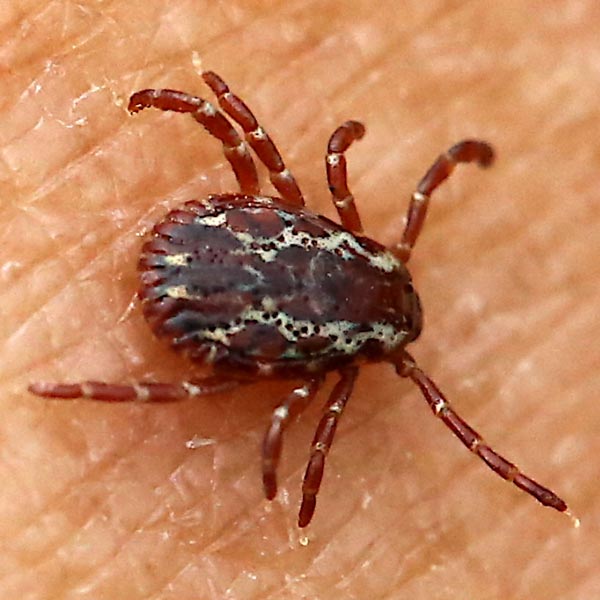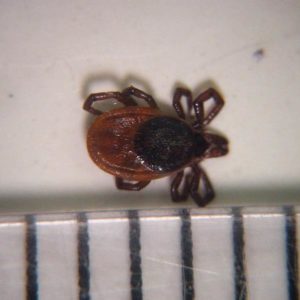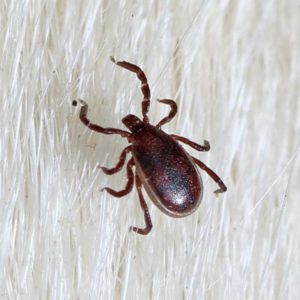| Habitat & Behavior |
The American dog tick does not survive well indoors. If found indoors, it was probably carried in on a dog and dropped off when fully engorged to seek a suitable place for egg laying. Both larvae and nymphs actively crawl about seeking a small mammalian host, primarily rodents. Nymphs alone are known from wood rat, sheep, cattle, and dog. Because of this kind of host seeking activity, neither larvae nor nymphs are picked up on tick drags. Adults crawl up grass or other low vegetation, cling to it with their 3rd pair of legs. They prefer larger mammals as hosts and these include the preferred dog and others such as man, cattle, opossum, coyote, hog, horse, raccoon, wild cat, squirrel, sheep, skunk, deer, fox, domestic cat, mule, rabbit, Norway rat, ground squirrel, donkey/burro, weasel, and woodchuck. American dog ticks are attracted by the scent of animals and are therefore most numerous along roads, paths, and trails. The concentration is further increased along such travel routes by the dropping of engorged ticks from their host animal. |



